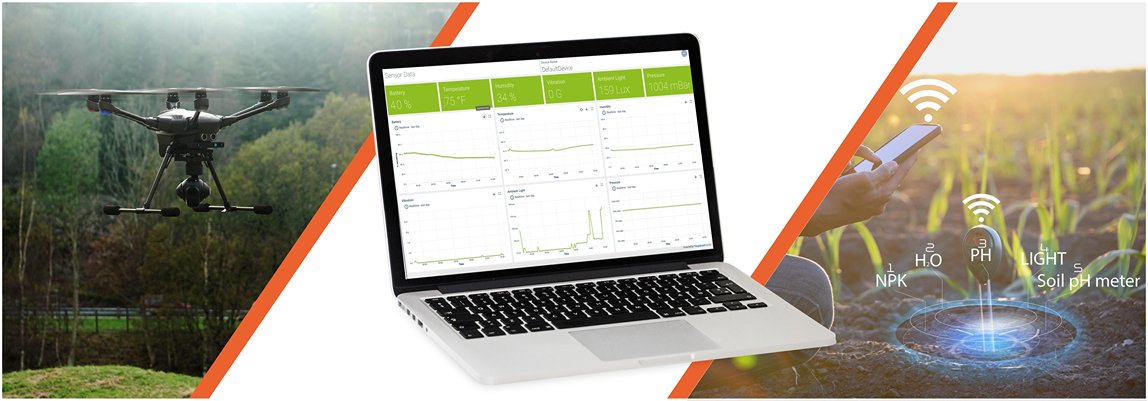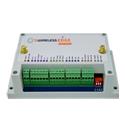
Connected Farming: The Rise of Smart Agriculture
Introduction to Smart Agriculture
Definition
Smart agriculture, also known as precision farming, is an innovative farming approach that integrates advanced technology and data analytics to enhance agricultural practices. This method leverages Internet of Things (IoT) devices, sensors, drones, artificial intelligence (AI), and other cutting-edge technologies to monitor and manage agricultural processes efficiently.
Importance and Benefits
The importance of smart agriculture cannot be overstated. It addresses critical challenges such as food security, environmental sustainability, and resource optimization. By using technology, farmers can make data-driven decisions that lead to increased productivity, reduced waste, and sustainable farming practices. Smart agriculture ensures efficient use of water, fertilizers, and pesticides, which not only boosts crop yield but also minimizes environmental impact.
Types of Smart Agriculture
Precision Farming
Precision farming involves using data and technology to monitor and manage field variability. It includes techniques like soil sampling, GPS mapping, and variable rate technology to optimize field-level management regarding crop farming. This approach helps in applying the right amount of inputs (like water, fertilizers, and pesticides) at the right time and place, ensuring maximum efficiency and yield.
Livestock Monitoring
Smart agriculture extends to livestock management using IoT devices and sensors. These technologies help monitor the health, location, and activity of livestock. Farmers can track vital signs, detect diseases early, and ensure proper nutrition and care for their animals, ultimately leading to better productivity and animal welfare.
Automated Irrigation
Automated irrigation systems use sensors to monitor soil moisture levels and weather conditions. These systems can automatically adjust the watering schedule to ensure optimal soil moisture, reducing water wastage and ensuring that crops receive the right amount of water at the right time.
Vertical Farming
Vertical farming is a revolutionary approach to agriculture where crops are grown in stacked layers, often in controlled environments like warehouses or shipping containers. This method uses hydroponics, aeroponics, and aquaponics systems to grow crops without soil, making efficient use of space and resources. It allows for year-round production and is ideal for urban areas with limited arable land.
Robotic Farming
Robotic farming involves the use of robots to perform various agricultural tasks such as planting, weeding, harvesting, and sorting. These robots can work tirelessly and with high precision, reducing labour costs and increasing efficiency. They are particularly useful for repetitive tasks and can operate in environments that may be hazardous for human workers.
Agribusiness Management
Smart agriculture also includes advanced software solutions for managing agribusinesses. These platforms offer tools for financial planning, inventory management, supply chain optimization, and market analysis. By integrating these tools, farmers can make more informed decisions, streamline operations, and improve profitability.
Key Technologies in Smart Agriculture
Sensors and IoT Devices
Sensors and IoT devices are the backbone of smart agriculture. They collect real-time data on various parameters such as soil moisture, temperature, humidity, and crop health. This data is then transmitted to a central system where it is analysed to provide actionable insights.
Drones
Drones are used for aerial surveys, mapping, and monitoring of agricultural fields. They provide high-resolution images and can cover large areas quickly, making them ideal for crop health assessment, irrigation management, and pest detection.
Autonomous Tractors and Farm Equipment
Autonomous tractors and farm equipment use GPS, AI, and machine learning to operate with minimal human intervention. They can perform tasks such as ploughing, planting, and harvesting with high precision, reducing labour costs and increasing operational efficiency.
Artificial Intelligence (AI) and Machine Learning
AI and machine learning algorithms analyse data collected from various sources to provide insights and predictions. They can forecast weather conditions, predict pest outbreaks, and optimize planting schedules, helping farmers make informed decisions.
Cloud Computing
Cloud computing provides a scalable and flexible platform for storing and processing large amounts of agricultural data. It enables farmers to access data and analytics tools from anywhere, facilitating better decision-making and collaboration.
Smart Irrigation Systems
Smart irrigation systems use sensors and weather data to optimize watering schedules. They can adjust the amount of water delivered based on real-time conditions, ensuring efficient water use and healthy crops.

Technology Use Cases for Smart Farming
Soil Quality Monitoring
Sensors placed in the soil monitor its moisture, pH, and nutrient levels. This data helps farmers make informed decisions about fertilization and irrigation, ensuring optimal soil health and crop growth.
Climate Conditions Monitoring
Weather stations and sensors provide real-time data on temperature, humidity, and rainfall. This information helps farmers plan planting and harvesting schedules, protect crops from adverse weather, and optimize resource use.
Crop Health Monitoring
Drones and sensors monitor crop health by detecting signs of disease, pest infestation, and nutrient deficiencies. Early detection allows for timely intervention, reducing crop loss and ensuring higher yields.
Precision Planting and Irrigation
Precision planting and irrigation systems use GPS and IoT devices to apply seeds and water with pinpoint accuracy. This ensures uniform crop growth and efficient use of resources, leading to higher productivity and lower costs.
Livestock Monitoring, Feed Management, and Health Monitoring
IoT devices track livestock location, activity, and health metrics. Automated feed management systems ensure optimal nutrition, while health monitoring devices detect illnesses early, reducing veterinary costs and improving animal welfare.
Automation in Agriculture (Autonomous Tractors, Drones, Smart Greenhouses)
Automation technologies like autonomous tractors and drones perform repetitive tasks with high precision. Smart greenhouses use sensors and control systems to create optimal growing conditions, ensuring consistent and high-quality produce.
Benefits of Smart Agriculture
Increased Efficiency
Smart agriculture technologies optimize resource use, reducing waste and increasing productivity. Farmers can achieve higher yields with fewer inputs, improving overall efficiency.
Cost Reduction
Automation and precision technologies reduce labour costs and minimize the use of water, fertilizers, and pesticides. This leads to significant cost savings for farmers.
Sustainable Practices
Smart agriculture promotes sustainable farming practices by reducing the environmental impact of agriculture. Efficient resource use, reduced chemical runoff, and better soil management contribute to environmental sustainability.
Improved Crop Yield
Data-driven decisions and optimized farming practices result in higher crop yields. Smart agriculture helps farmers grow more food on the same amount of land, addressing food security challenges.
Enhanced Accuracy and Financial Forecasting
Advanced analytics and AI provide accurate forecasts and financial planning tools. Farmers can predict market trends, manage risks, and make better investment decisions.
More Efficient Reporting
Digital tools streamline reporting and compliance processes. Farmers can easily track and document their operations, ensuring transparency and accountability.

Challenges in Smart Agriculture
Technical Challenges
Connectivity Issues
Reliable internet connectivity is crucial for the functioning of IoT devices and cloud-based systems. Rural areas often face connectivity issues, hindering the adoption of smart agriculture technologies.
How TxWireless can help overcome this challenge: The advances in NTN Satellite connectivity are proving to be ideally suited for overcoming the connectivity issues. Learn how TxWireless teamed up with Taoglas, and Skylo to bring NTN Connectivity to LvLogics’ silo monitoring solution, ensuring reliable and continuous connectivity for smart agriculture applications.
Data Management
The vast amount of data generated by smart agriculture systems requires robust data management solutions. Ensuring data accuracy, security, and accessibility can be challenging for farmers.
How TxWireless can help overcome this challenge: TxWireless offers EDGE Insights, a cloud-based software platform that enables flexible, reliable, and efficient gathering of data and lifecycle management of IoT devices. EDGE Insights allows secure remote connection and management of sensors, machines, and devices, simplifying data management and enabling farmers to focus on their core business operations.
Economic Challenges
High Initial Investment
The cost of implementing smart agriculture technologies can be prohibitive for small and medium-sized farms. High initial investment in equipment, sensors, and software can be a barrier to adoption.
How TxWireless can help overcome this challenge: TxWireless provide a range of off the shelf technology accelerator platform to help our client bring product innovation to market faster and with reduced investment. TxWireless is a reliable supply chain and manufacturing partner of smart connected devices and we offer a wealth of experience and expertise to ensure the delivery of top-tier products, precisely on schedule and within budget.
ROI Concerns
Farmers may be hesitant to invest in new technologies without clear evidence of return on investment (ROI). Demonstrating the long-term benefits and cost savings is essential for encouraging adoption.
Learn how TxWireless help our clients overcome this challenge: Leveraging Next-Gen IoT for Automation of Silo Monitoring and Management
Regulatory and Security Challenges
Data Security
The use of digital technologies in agriculture raises concerns about data privacy and security. Protecting sensitive information from cyber threats is critical for maintaining trust and compliance.
How TxWireless can help overcome this challenge: At TxWireless we understand the critical need for robust IoT security. By following a comprehensive Security Development Lifecycle (SDL) process during product design, TxWireless ensures that security is integrated from the outset, protecting the integrity, privacy, and resilience of digital ecosystems in smart agriculture.
Compliance with Regulations
Navigating the complex regulatory landscape can be challenging for farmers adopting new technologies. Ensuring compliance with local, national, and international regulations is essential for successful implementation.
How TxWireless can help overcome this challenge: TxWireless is dedicated to creating innovative smart connected devices that meet the highest industry standards and regulations. This commitment ensures that all products comply with the necessary regulatory requirements, facilitating smooth and successful technology adoption for farmers.
Future of Smart Agriculture
Emerging Trends
Technological advancements continue to drive innovation in smart agriculture. Emerging trends include the use of blockchain for supply chain transparency, advanced AI algorithms for predictive analytics, and the integration of renewable energy sources in farming operations.
Potential Innovations
Future innovations in smart agriculture may include the development of more sophisticated sensors, the use of genomics for crop improvement, and the adoption of advanced robotics for labour-intensive tasks.
Role of AI and Machine Learning
AI and machine learning will play an increasingly important role in smart agriculture. These technologies will enable more accurate predictions, automated decision-making, and continuous improvement of farming practices.
Policy and Regulation
Supportive policies and regulations are crucial for the widespread adoption of smart agriculture. Governments and regulatory bodies must create an enabling environment that encourages innovation while ensuring data security and sustainability.
Conclusion
Summary of Key Points
Smart agriculture leverages advanced technologies to enhance farming practices, improve productivity, and promote sustainability. Key technologies include sensors, IoT devices, drones, AI, and cloud computing. Smart agriculture offers numerous benefits such as increased efficiency, cost reduction, and improved crop yield, but also faces challenges related to connectivity, data management, and high initial investment.
Final Thoughts on the Future Impact of Smart Agriculture
The future of smart agriculture looks promising, with continuous advancements in technology driving innovation and efficiency. By addressing current challenges and embracing emerging trends, smart agriculture can significantly contribute to global food security, environmental sustainability, and economic growth. As farmers adopt these technologies, they will be better equipped to meet the demands of a growing population while preserving the planet for future generations.
For any questions regarding the discussed content, please don’t hesitate to reach out to the team via email at sales@txwireless.com. Please visit our capabilities page to learn more about how TxWireless can help you with your connected device requirements.
Author:
Frank Lennon – Product Manager


























